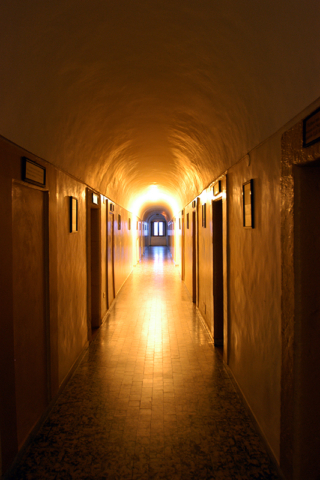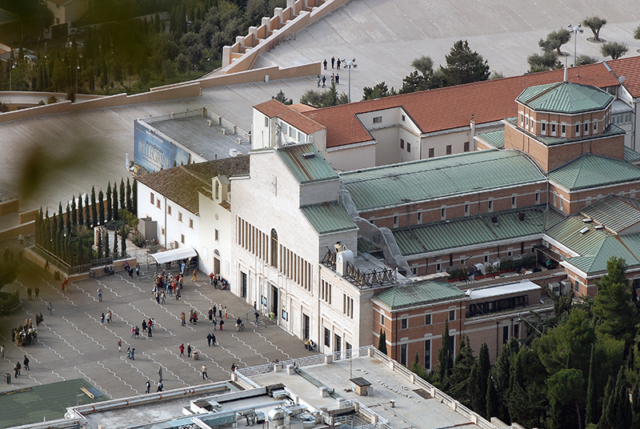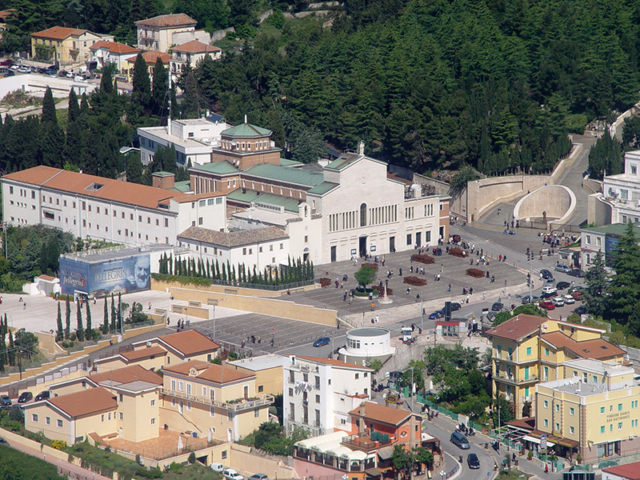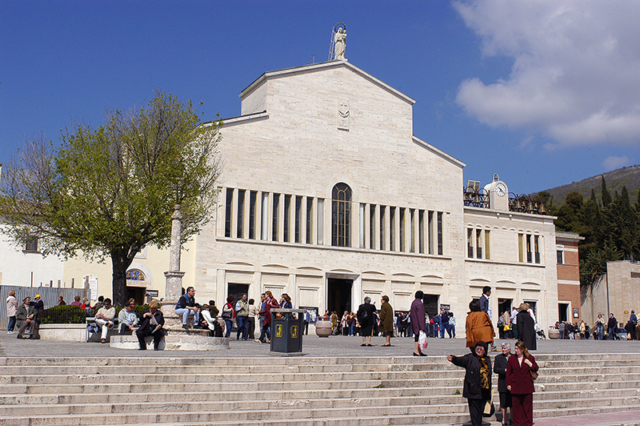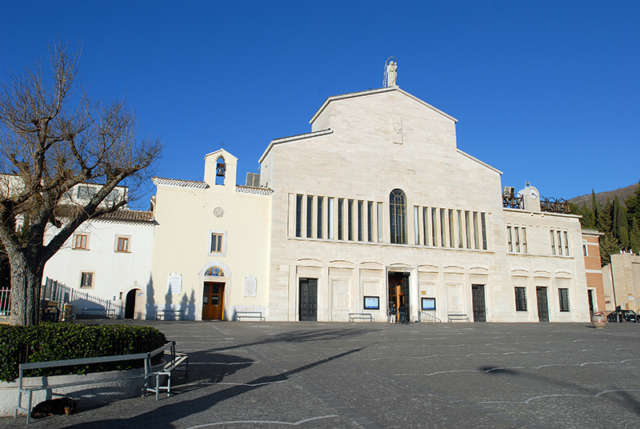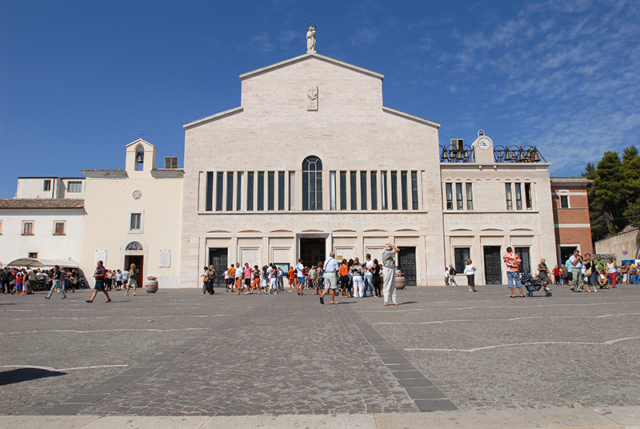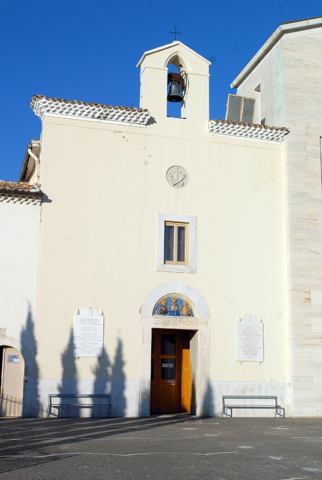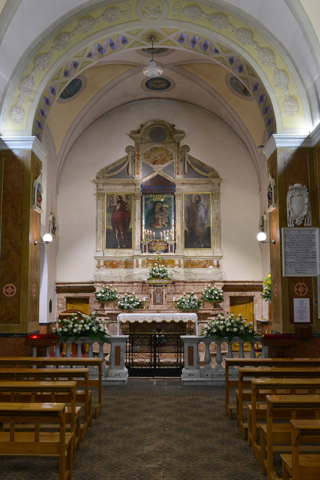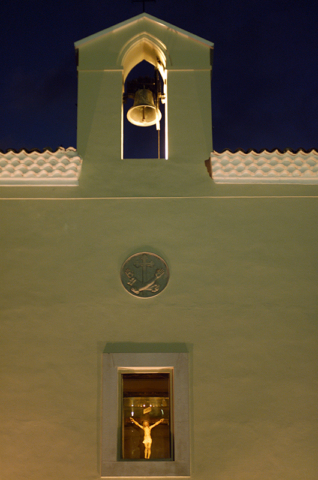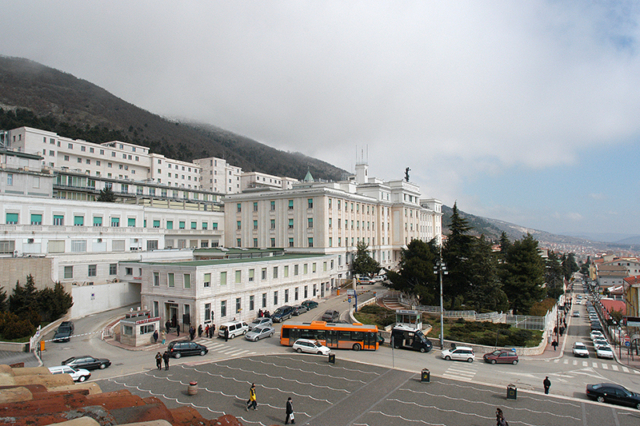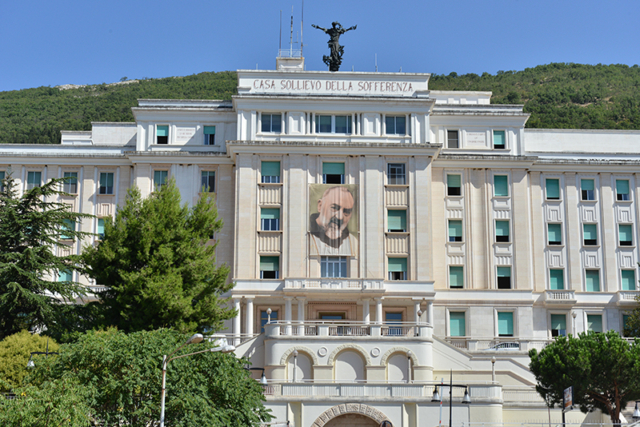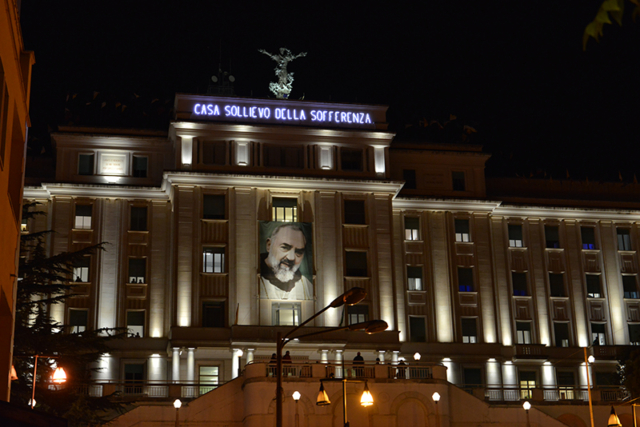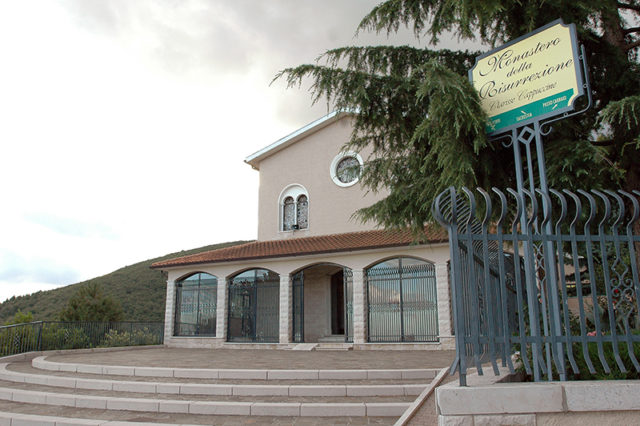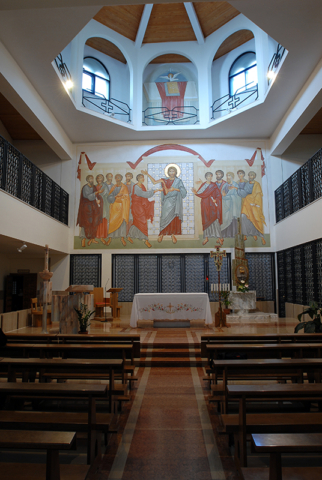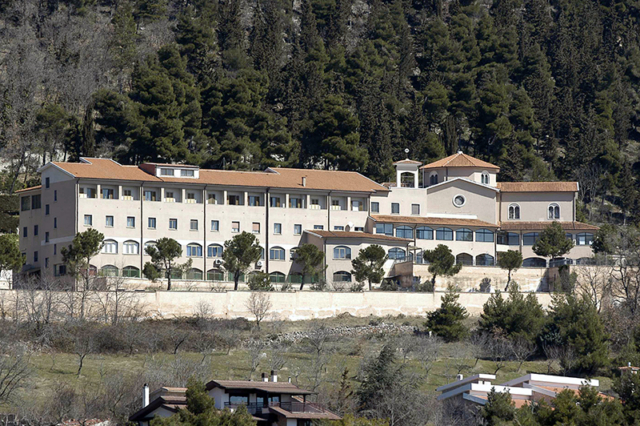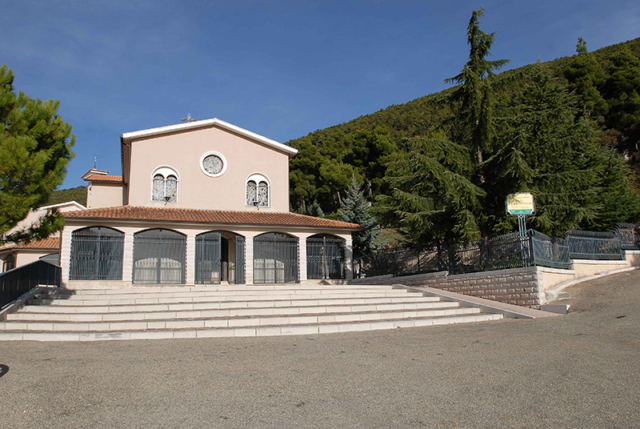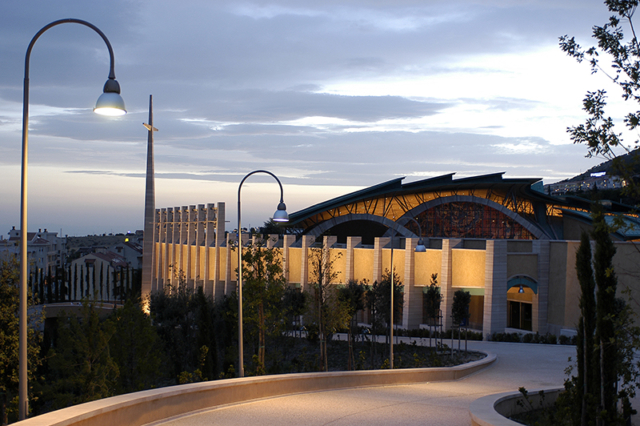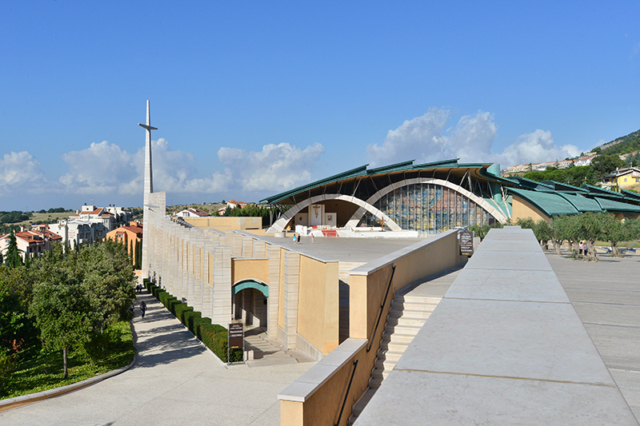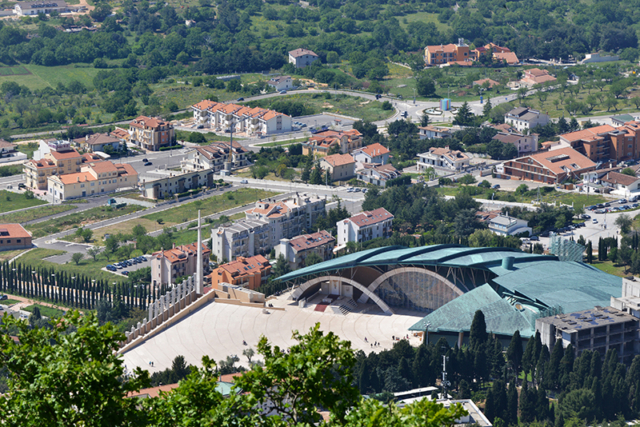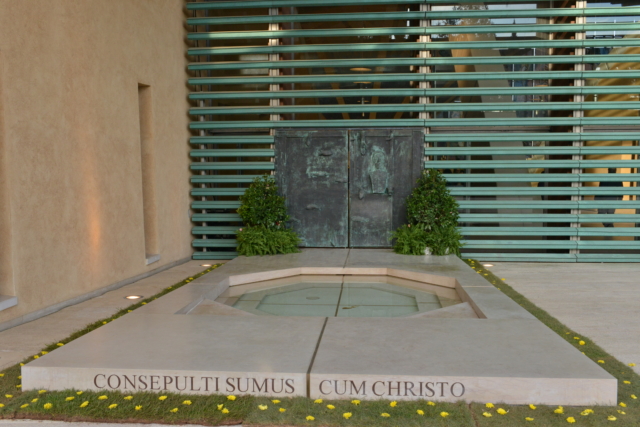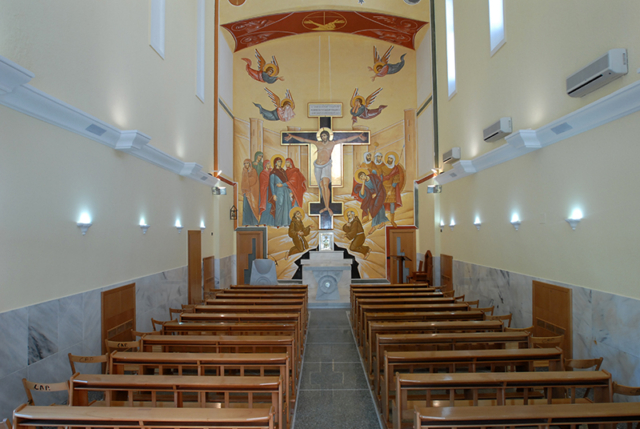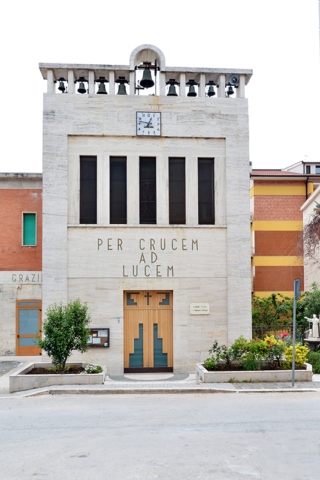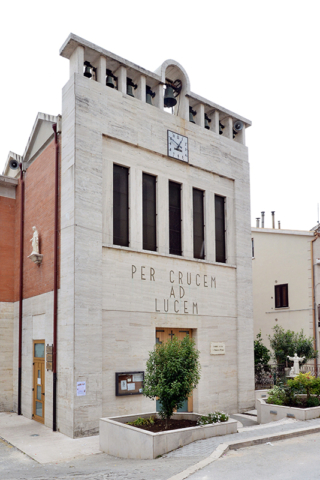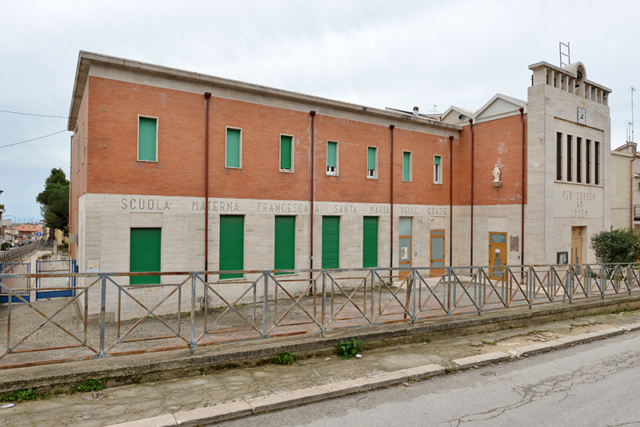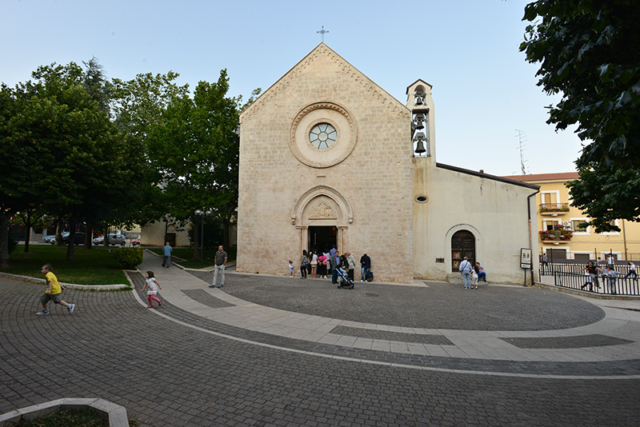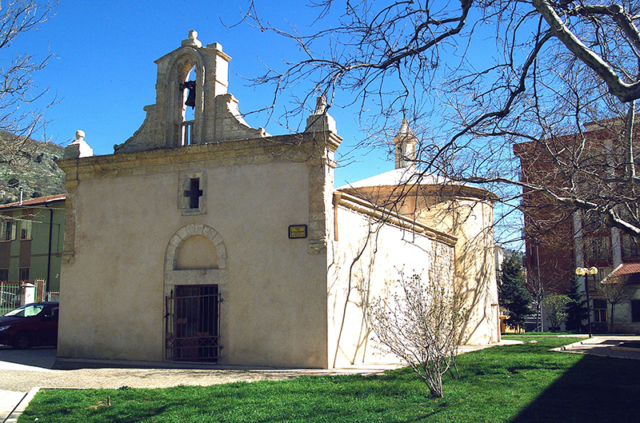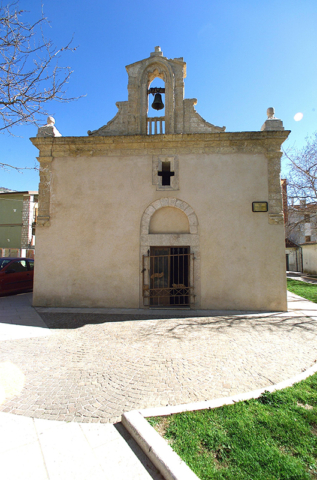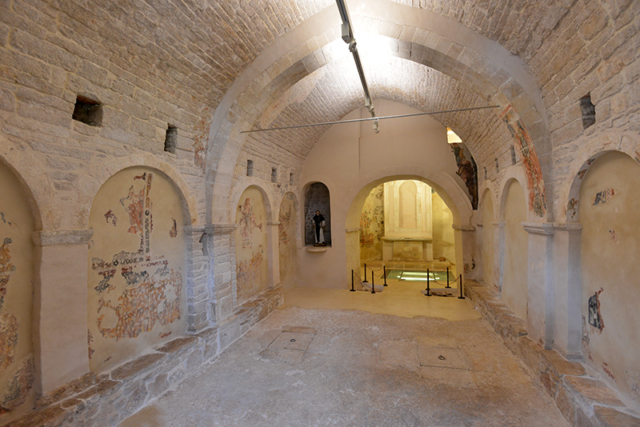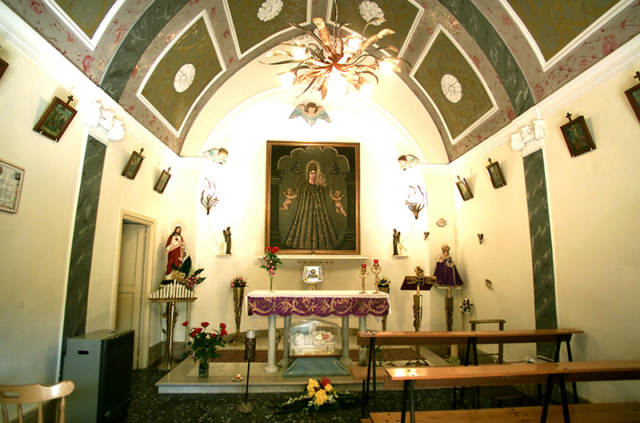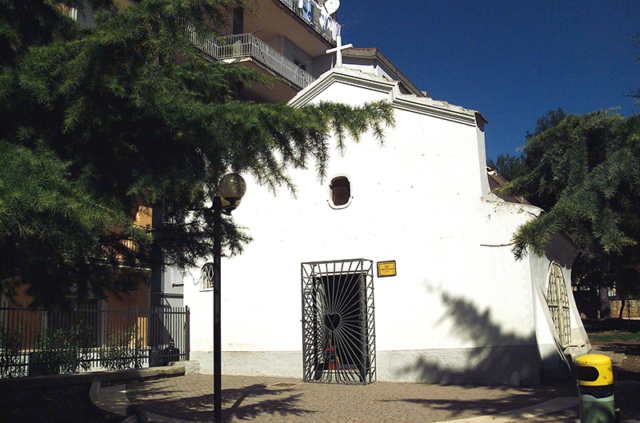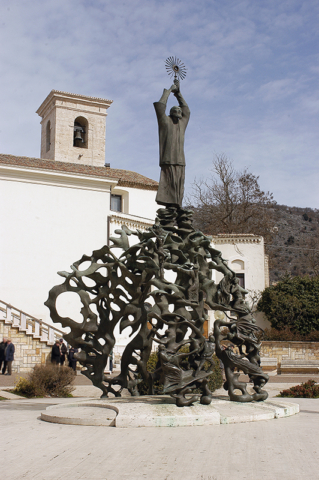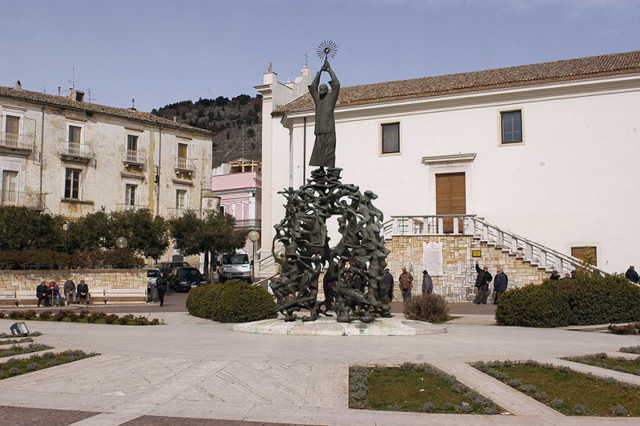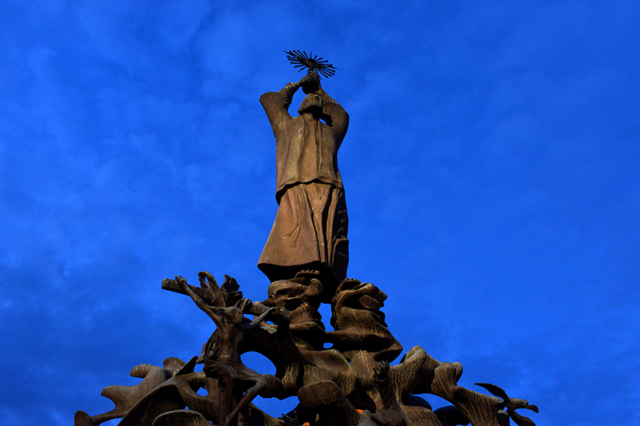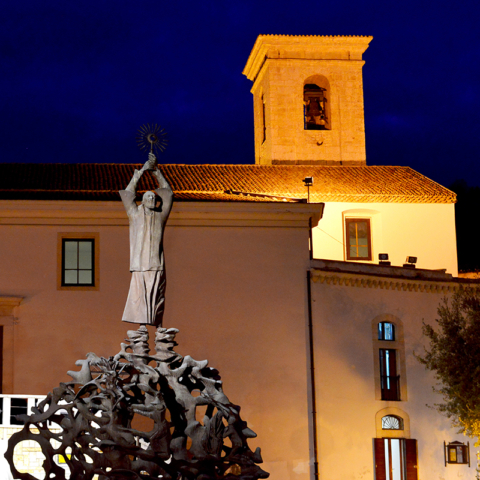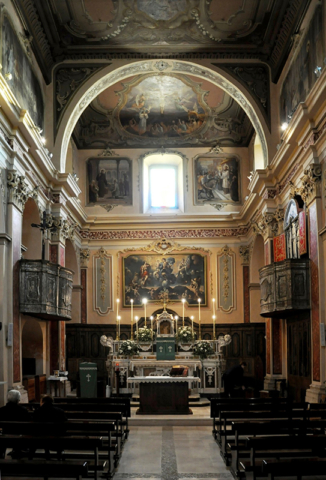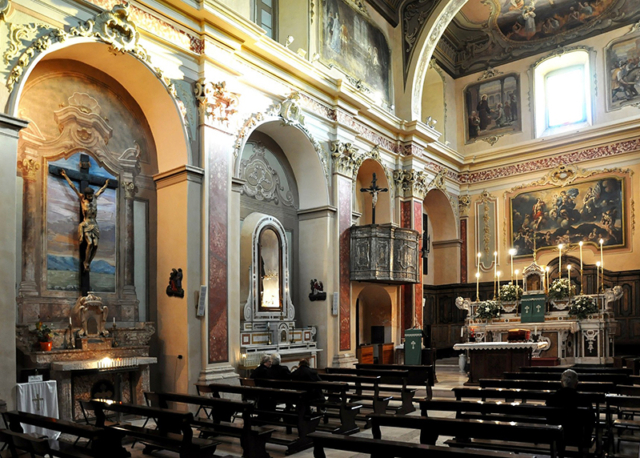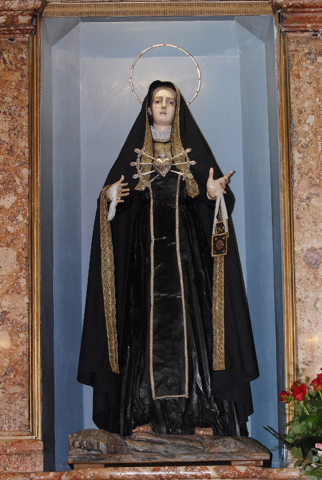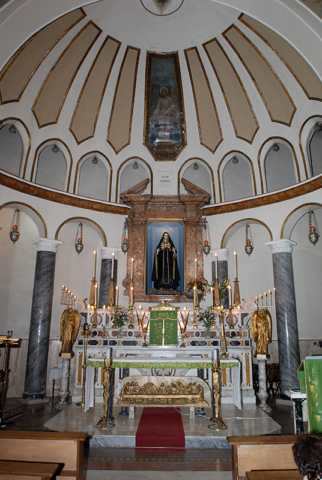San Giovanni Rotondo is situated in the middle of a wide hollow, about 9 miles distant from Monte Sant’Angelo, and 567 meters above sea level. The town spreads out on the Pianoro plateau, between the two highest peaks of the Gargano mountain: Mount Nero and Mount Calvo. The town still preserves the typical structure of ancient mountain villages, with their whitewashed houses and terracotta roof tiles.
HISTORY
No historical sources exist on the origins of San Giovanni Rotondo, but tradition recounts that its first founders were Greek, the followers of Diomedes. Early settlements date back to the Neolithic period; during the Iron Age the area was visited by groups of Illyrians who were later known as the Daunians. The village became a Roman settlement in the 4th – 3rd century BC; a round-shaped temple was erected to the east of the village. It was initially dedicated to Apollo, then to Vesta, and finally to Janus. The temple was called “La Rotonda” (Round) because of its round shape. Excavations have revealed tombs dating back to that period. Later, the inhabitants of the area converted to Christianity; the temple was demolished and a church dedicated to Saint John the Baptist was built in its place. During the Norman-Hohenstaufen period, Emperor Frederick II fortified the village, surrounding it with walls and towers (there were actually fifteen of them), thus becoming an impregnable fortress. The town looked like a castle. Pilgrims coming from the tableland of the Puglia and heading towards Monte Sant’Angelo to venerate the grotto where Saint Michael the Archangel had appeared would travel along the “Via Sacra Langobardorum”. After a short rest at the shrines of Santa Maria di Stignano and of San Matteo at San Marco in Lamis, they would almost always stop at San Giovanni Rotondo.
Also Saint Francis of Assisi left signs of his presence at San Giovanni Rotondo in the year 1222, on his way back from the Holy Grotto of Saint Michael. A Franciscan friary was erected in via Michele D’Apolito, on the corner of via Pietro Giannone. No ruins of the friary remained after the 18th century.
STOPS
The Capuchin Friary
Far from the town is the Capuchin friary, where the famous Friar from Pietrelcina lived and worked. He occupied cell number five in the friary upon his arrival in S. Giovanni Rotondo and until the year 1968. The cell is furnished with a bed, a Crucifix, a chest for linen, a bedside table, a writing table, two chairs and a hanging shelf with some books on it. The cell cannot be visited as it is in the part of the friary dedicated to cloistered life. A chapel with a niche with a statue of the Virgin Mary faces the cell. Here, Padre Pio celebrated Holy Mass during his period of cloistered life from June 11th 1931 to July 15th 1933. The service lasted about three hours.
*Construction work began in 1538, requested and paid for by the local people and with the approval of the Archbishop of Siponto, Cardinal Giovanni Maria of Monte San Sabino, who later was to become Pope Julius III. The property, donated by Orazio Antonio Landi, included a country house and a well.
*In 1540, it was taken over by the friars, bearing witness to God by leading a holy life and receiving divine aid in return.
*On February 1st, 1575, Camillo De Lellis stopped over at the friary. Following a long conversation with Padre Angelo, superior of the friary, he decided to change his lifestyle.
*1811: the friary was shut down for the first time.
*1818: the friary was reopened.
*1867: at the beginning of the year, the friary was shut down once again.
*1867: October 20th, friary, church, land, furniture and furnishings became property of the municipality of San Giovanni Rotondo for the purposes envisaged in art. 20 of the suppression law issued on July 7th 1866. Until the year 1908, the friary was then utilized as a poorhouse.
*1904: Provincial Father Pio of Benevento made several attempts with the municipal administration to get the friary back.
*1909: Provincial Father Benedetto of San Marco in Lamis managed to get the friary back and, at the beginning of September, ownership returned to the friars again.
*1916: July 28th, Padre Pio of Pietrelcina arrived at the friary. As of that moment onwards, the history of the friary is linked to that of the holy friar.
THE SHRINE OF OUR LADY OF GRACE
The shrine comprises the old 16th century church and the new larger basilica. They are both dedicated to Our Lady of Grace.
The 16th Century Church
The Capuchin Friars arrived in Giovanni Rotondo to spread the Gospel following the rule of Saint Francis in 1540, and as a first sign of their arrival they erected a cross that is still visible in the shrine square . Here they built the old church and consecrated it to Our Lady of the Angels. On 5 July 1676, the church was solemnly dedicated to Our Lady of Grace. In this small church Saint Pio celebrated holy Mass from 1916 to 1959 and on the left as one enters is the confessional where from 1935 until the day he died he would hear the confessions of the women. Also above the main altar is the image of Our Lady of Grace, Protectress of San Giovanni Rotondo. In this church, where Padre Pio lived and battled for more than 40 years, praying, hearing confessions and celebrating Mass, it is possible to obtain a plenary indulgence following the customary Church ruling.
The New Basilica
While Saint Pio was living, the old 16th century church soon became too small to receive the always growing numbers of faithful and in 1954, Padre Pio began celebrating Mass outside in the open. It became necessary to build a larger church. The construction began in 1956, directed by the architect Giuseppe Gentile of Boiano. The church, consecrated on 1 July 1959, consists of a central nave with two aisles. At the far end of the central nave is the altar on which Saint Pio celebrated Mass in his last years. An imposing mosaic in the apse depicts Saint Pio as an intercessor between Our Lady and the faithful. The side aisles, have nine altars with mosaic depictions most of which carried out by the Vatican school and a statue of St. Anthony with the Child Jesus. On 23 May 2012, a new mosaic depicting Blessed John Paul II was inaugurated and on 13 September, of the same year, a mosaic depicting Blessed Mother Teresa of Calcutta, both the work of Master Albano Poli of Verona.
The Way of the Cross
Padre Pio’s life was filled with suffering, which he lived with dignity, discretion, heroicity and never for show. He offered this suffering to the Lord for man’s salvation. The Saint of Pietrelcina, for 50 years bore the wounds of Christ (the stigmata) in his body to assist the Lord and mankind to carry the cross and he became known as “Everyone’s Cyrenean.” He is represented in this role by the sculptor Francesco Messina (1900- 1995), one of the greatest artists of the last century, in this monumental Way of the Cross that winds its way up Mount Castellano, a mountain that welcomed Padre Pio in 1916, and at the foot of which he is buried and rests in peace today. This Way of the Cross, an itinerary of faith, was wanted very much by Padre Pio and he blessed the foundation stone. The artist worked on his sculptures from 1968 to 1971. Two large stairways welcome, in an ideal embrace, the faithful who wish to carry out this pious penitential practice and which commences before a statue of Our Lady with the Child Jesus, a work by the same artist. The fifth station depicts Padre Pio as the Cyrenean freely offering himself to the Lord to carry His cross. The way of the Cross ends at the summit of the mountain beneath a majestic sculpture of the Risen Christ.
The Home for the Relief of Suffering
Already in 1925, Padre Pio had wished for this building to be erected, as he hoped to provide the people of S. Giovanni Rotondo with a nursing home for the ill. He gathered generous contributions and managed to transform a former monastery into the small civil hospital of Saint Francis, with two wards, functional equipment and twenty beds. In 1938 an earthquake destroyed the building. However, Padre Pio’s idea was to build a “clinic” near the friary. Construction work began in May 1947. Offerings came from all over the world for the building of the clinic which was inaugurated on May 5th 1956. Padre Pio named it “The Home for the Relief of Suffering”, and it is the most eloquent example of his apostolate. Today, “The Home for the Relief of Suffering” has become a hospital city and its first twenty beds have now become about twelve hundred. In recent years two new buildings have been added to the hospital: the “John Paul II Day Hospital” and the Institute of Regenerative Medecine ISBReMIT.
The Monastery of the Resurrection
Saint Pio’s wish to have an order of contemplative nuns in San Giovanni Rotondo became a concrete reality in 1987, on the 100th anniversary of Saint Pio’s birth, with a community of Capuchin Poor Clare Nuns, following the Rule of Saint Francis and Saint Clare of Assisi. The monastery in which the Poor Clare nuns live in total poverty and separated from the world is situated high up on Mount Castellano surrounded by green and quiet most fitting for a spiritual life of contemplation. It is possible to visit the monastery, except for the cloistered area that is closed off to visitors. There is a museum that recounts the history of the Poor Clares, and one may attend Holy Mass, Benediction and other liturgical celebrations in the church of the Resurrection.
The New Church of St. Pio of Pietrelcina
After Saint Pio’s death, his fellow friars conscious of the always increasing spiritual and physical needs of the faithful entrusted to the architect Renzo Piano, the design and building of a new church able to contain 6,500 people.
The Church Square
The square is incorporated in the “open” church design. It slopes gently downwards to lead the pilgrim to the interior of the sacred building named after Saint Pio of Pietrelcina and holds the faithful during open air liturgies and Eucharistic processions. It can contain about 30,000 people. In the square and surrounding area many plants and trees have been planted that are typical to the Gargano region: 40 olive trees, 2000 cypress trees, 230 oak trees, 500 pine trees, 400 strawberry trees, 550 myrtles, 23000 lavender plants, 50,000 ivy plants.
The Upper Church
The upper church that can seat 6,500 people opens up to the pilgrim as a stunning masterpiece. Structurally it is innovative, nevertheless it sacrifices nothing to the liturgy.
Its structure consists of a series of arches of Apricena stone held together internally by steal girders that irradiate from the altar like the extended fingers of a hand and which form and support the church. They interlock to form three semi-circular naves around the altar. There are no two blocks of stone that are identical symbolising how each single Christian is an essential component of the Church: “You are living stones built upon the foundation of the apostles and prophets, with Christ Jesus himself as the cornerstone.” The arched roof unites and protects the faithful.
The Baptismal Fount
The baptismal fount is outside the liturgical hall, near the liturgical entrance and it consists of an octagonal shaped pool made from Apricena stone for the immersion of the baptised.
The Lower Church
In 2009 it was decorated, with the hall leading to it with mosaics by the Jesuit, Fr. Marko Ivan Rupnik, the director of the Centre of Studies and Research of “Ezio Aletti” in Rome.
Along the hallway walls are represented on either side the more significant and parallel events in the lives of Saint Francis and Saint Pio. They begin with two scripts that invite the pilgrim to slacken their pace and to reflect on the new life received in Baptism and which Saint Francis and Saint Pio lived in a radical way. Depictions from the life of Jesus follow, which are the principal stepping stones in the story of salvation and remind us spiritually that God became man so that we could participate in His divinity. In the lower church as well as the depictions from the life of Christ are two scenes from the Old Testament. The place raises our mind’s heavenwards, the true home of all baptised. This heaven is Christ and we find ourselves in Him. On 19 April 2010, in a space between the central pillar that supports the entire church and an outer wall on which are depicted an angel and Christ the Pantocrator, the reliquary containing the body of Saint Pio of Pietrelcina has been placed. The lower church with its mosaics was blessed on 21 June 2009, by Pope Benedict XVI on his pastoral visit to San Giovanni Rotondo. On 1 June 2013, the relics of the mortal remains of Padre Pio were exposed permanently for the veneration of the faithful during a celebration presided by Cardinal Angelo Amato, Prefect of the Congregation of the Causes of Saints.
For all of the above, San Giovanni Rotondo is currently one of the world’s major spiritual venues.
Church of Saint Onofrio
This church dates back to the 14th century. On April 23rd 1344, Pope Clement VI granted special indulgences to its visitors by means of a pontifical bull. As of the 16th century, it ceased being a parish church but, following an initiative undertaken by the community of San Giovanni Rotondo, Gonsalvo Ferrante, duke of Terranova, granted it the permission to celebrate Saint Onofrio’s day every June 11th.
Church of Saint John the Baptist or Church of the Rotonda
Walking down the narrow and steep paths, one can visit the Church of San Giovanni, also known as the “Rotonda”, after which the town was named. It is on the eastern side of the town. Light is provided by an opening in its roof.
Having the Benedictine monks of the monastery of San Giovanni in Lamis (today’s convent of San Matteo) converted the Pirgians to Christianity, the latter dedicated the ancient circular pagan temple to Saint John the Baptist.
Chapel of Our Lady of Loreto
It is near the Church of Sant’Onofrio. The original building dates back to the 15th century. It was built by the faithful people of the Marche region who used to go on pilgrimage to the Archangel at San Michele. The church was built in remembrance of their continuous presence in the area.
Mother Church (Saint Leonard, Abbot)
What can be seen today at the beginning of Corso Regina Margherita is a reconstruction of an ancient church; no traces of the original remain. There used to be a 13th -century temple in the place of the church. It was called “the Church of Saint Leonard” because, apart from being dedicated to the abbot saint, it received payment of several ground-rents from the homonymous monastery in Siponto.
Monument by Fazzini dedicated to Padre Pio
In Piazza degli Olmi one can admire the last work produced by sculptor Pericle Fazzini, whom the poet Ungaretti defined as “the sculptor of wind”. It is a statue of Padre Pio with his hands raised up in the air in the act of showing the monstrance. On the lower section, four episodes of Padre Pio’s life are represented: in the first one, he is threatening as he uses a pitchfork to push back a friend who tries to convince him not to devote his life to the Lord; in the second, the devil’s temptation; in the third, he administers the sacrament of reconciliation; and in the last one, he receives the marks of Christ’s passion.
The Church of Saint Ursula
Also known as “the Church of Purgatory”, it was built between 1596 and 1600. It is in the baroque-rococo style; on the facade are a portal made of marble-stone, a large window and two niches from which the statues of Saint Francis of Assisi and Saint Anthony stand out. The bell cote rises transversally to the facade, housing two bells of different sizes. On the smaller one is inscribed “Verbum caro factum est”, while on the larger one the figure of Saint Anthony of Padua is reproduced.
The Churches of Saint Donato and Saint Catherine
In the inner city and on both the streets named after the saints, there are two small churches, both built in the 13th century. Unfortunately, no sign is left of their glorious past. In the first church, one can admire a 17th-century canvas on the high altar, while in the second one is an admirable frescoed vault depicting scenes of the Holy Virgin Mary’s life.
The Church of Saint Mary Magdalen
Also known as the “Church of the Nuns”, it was commanded by vicar forane Father Bernardino Galassi who, in his will, stated his desire to leave a sum of money for the construction of a convent. The cloistered nuns coming from Monte Sant’Angelo moved to Manfredonia in 1905. Padre Pio willed that a hospital be constructed in the place of the convent. However, the hospital was shut down following an earthquake. Today, the only remains of the ancient building are those of the facade, buttressed and unsafe.
The Church of Saint Nicholas
The church dates back to the 17th century. Inside the church is the statue of Our Lady of Dolours. Every Good Friday morning, it is taken to the Church of Saint Ursula for the liturgy, while in the evening it is carried down the streets of the town in the procession of the Way of the Cross. Padre Pio deeply venerated the Our Lady of Dolours and was very devoted to her, to the point that in 1965, he himself arranged for the statue to undergo restoration. Once the restoration was completed, Padre Pio personally blessed the statue.
The Church of Saint Joseph the Craftsman
It is a modern church, erected in Piazza Europa, near the monument to the Fallen. Padre Pio attended the ceremony of the laying of the first stone on May 1st 1958, and he signed the remembrance parchment which was then placed in the foundations. Work was completed, after many difficulties, in August 1965. Padre Pio had been invited for the consecration which had been scheduled for September 11th of that same year; he replied: “Why should I attend? Someone more important than myself will be there!”. Indeed, from the cathedral where it was being kept temporarily, the painting of Our Lady of Grace was carried in procession, stopping for two days in the new church before being taken back to its original place.
The Church of Our Lord’s Transfiguration
The parish of Our Lord’s Transfiguration was established canonically on 1 October 2001 with a decree of the Archbishop of Manfredonia – Vieste, Mgr. Vincenzo D’Addario. On 5 April 2008, the first stone was laid for the new parish building and church and work was ended in 2010. The church was opened by the Archbishop of Manfredonia – Vieste – San Giovanni Rotondo, Mgr. Michele Castoro on 15 December 2010 and solemnly inaugurated by the same archbishop on 14 June 2014.
The Church of Saint James
There is another church deserving a visit along Corso Regina Margherita. Its main cult is the devotion to the Sacred Heart. In the past, it was connected to the first ancient hospital of San Giovanni Rotondo.
USEFUL INFORMATION
Transportation
By train
To travel by train to S. Giovanni Rotondo, take the train to the Foggia railway station. From there you can take a Sita bus, or a taxi to the friary of S. Giovanni Rotondo. Distance from Foggia: about 18 miles.
Train timetable: www.trenitalia.com
Bus timetable: www.sitabus.it
The taxi rank is close to the train station
By car
From the North
Bologna-Taranto highway (A14): exit at the San Severo toll station in the direction of S. Marco in Lamis.
From the Centre
Roma-Pescara highway (A24): exit at the San Severo toll station in the direction of San Marco in Lamis.
From the South (Tyrrhenian side)
Naples-Bari highway (A16): exit Candela-Foggia toll station for the free highway to Foggia in the direction of Manfredonia, then crossing for San Giovanni in Rotondo.
From the South (Ionian-Adriatic side)
Taranto-Bologna highway (A14): exit Foggia toll station in the direction of Manfredonia, then crossing for San Giovanni Rotondo.
By Bus
One can travel by bus to San Giovanni Rotondo from all the main cities of Italy and Europe with different bus companies. For more information visit the websites;
By Air
For more information visit the website:


